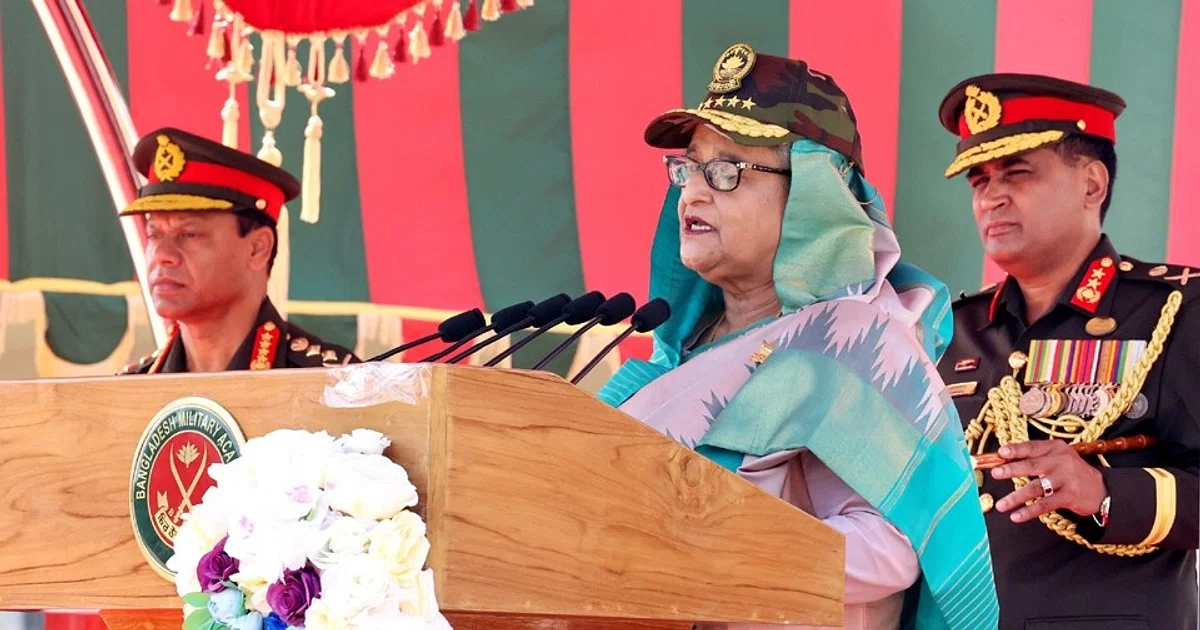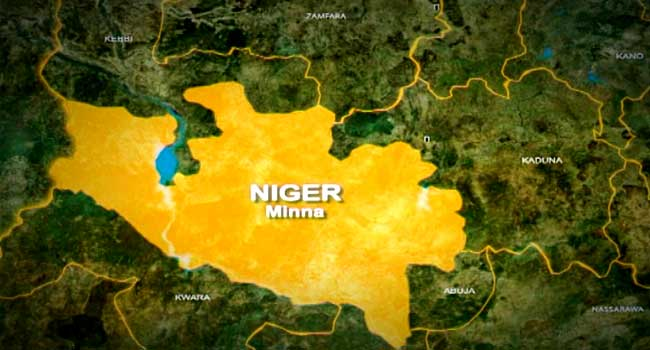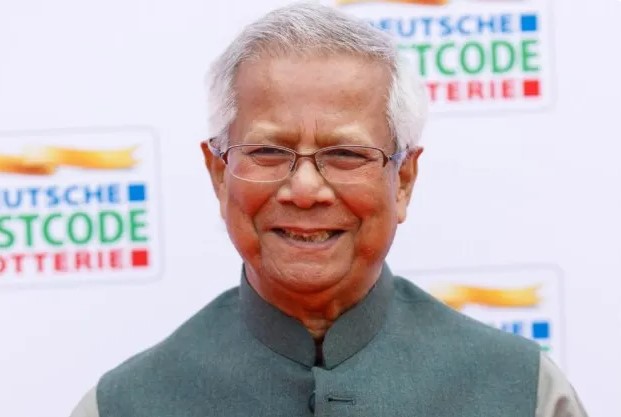World News
PM Hasina of Bangladesh Leaves the Nation, Military Assumes Command

After fleeing weeks of deadly protests, Bangladeshi Prime Minister Sheikh Hasina’s 15-year reign came to an end on Monday, as the military declared it would establish an interim administration.
Since the beginning of July, Hasina has attempted to put an end to protests against her government across the country; however, she left following a violent day of turmoil on Sunday that left around 100 people dead.
General Waker-Uz-Zaman, the head of Bangladesh’s army, announced on Monday that Hasina had resigned and that the armed forces would establish a provisional administration on state television.
Wearing military fatigues, Walker declared, “It is time to stop the violence. The country has suffered a lot, the economy has been hit, and many people have been killed.”
“I hope the situation improves after my speech,” he stated.
With regard to forming a caretaker government in the roughly 170 million-person South Asian nation, the veteran infantryman said he will speak with the president. Whether he would lead it was unclear at first.
Waker claimed to have had discussions with representatives of civil society and the major opposition parties, but not with Hasina’s Awami League.
A source close to Hasina, 76, told AFP that she left the nation by helicopter soon after demonstrators had overrun her Dhaka residence.
According to the source, she was flown out after leaving first in a motorcade. She did not disclose her location.
Significant vacuum
Before hundreds of people broke past the gates of Hasina’s official residence on Monday morning, jubilant crowds had waved flags and some had even danced on top of a tank in the streets.
Channel 24 in Bangladesh aired footage of reveling people pouring inside the property, waving to the camera, robbing books and furniture, and lounging on mattresses.
A statue of Hasina’s father, Sheikh Mujibur Rahman, the nation’s independence hero, was destroyed by others.
The Wilson Center in Washington’s South Asia Institute director, Michael Kugelman, issued a warning that Hasina’s exit “would leave a major vacuum.”
“Stability risks would be low and the consequences would be contained if it’s a peaceful transition with an interim setup taking over until elections are held,” he stated.
“However, there may be a greater chance of instability and issues both inside and outside if there is a violent transition or a time of uncertainty.”
Earlier, before the demonstrators entered the palace compound, Hasina’s son had asked security troops to prevent any takeover.
“It means it is your duty to ensure that no unelected government has power for even a moment,” her son Sajeeb Wazed Joy, who is based in the US, wrote on Facebook.
Throughout the agitation that started last month against civil service job quotas and eventually spread to calls for Hasina’s resignation, security forces had backed her government.
The deadliest day of the rioting was Sunday, when at least 94 people were slain, including 14 police officers.
Security officers opened fire as protesters and government supporters nationwide engaged in combat with sticks and knives.
As a result of the violence on the day, at least 300 people have died since the protests started in early July, according to an AFP count based on information from police, government representatives, and hospital physicians.
– The last protest
Following months of intense political turmoil, the military proclaimed an emergency in January 2007 and created a caretaker administration with military support that lasted for two years.
After taking over as leader of Bangladesh in 2009, Hasina was victorious in the January election in the absence of any serious challengers.
Rights groups accused her government of abusing state institutions, including the unlawful assassination of opposition activists, in order to strengthen its hold on power and quell dissent.
The reinstatement of a quota system that allocated over half of all government positions to particular groups sparked protests.
Despite the fact that Bangladesh’s top court has reduced the scheme, the protests become more intense.
On Monday morning, barbed wire blocked the path to Hasina’s office in Dhaka by soldiers and police in armored vehicles, but large crowds poured into the streets, knocking down the barriers.
It was impossible to confirm the Business Standard newspaper’s estimate of the number of protestors on the streets, which reached up to 400,000.
Asif Mahmud, one of the main organizers of the countrywide campaign of civil disobedience, declared, “The time has come for the final protest.”
In contrast to the previous month’s protests, which frequently resulted in violent crackdowns, military and police did not step in to quell the demonstrations on Sunday in a number of instances.
In a very significant rebuke of Hasina, a respected former army chief had earlier recommended that the government “immediately” withdraw troops and permit protesters.
Ex-army leader General Ikbal Karim Bhuiyan told reporters on Sunday, “Those who are responsible for pushing people of this country to a state of such extreme misery will have to be brought to justice.”




